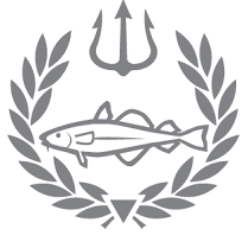Aug 9-10th
The last few days of my internship this summer have been spent in Massachusetts working with Eric Takakjian and NOAA. Eric owns his own business, Quest Marine Services, which does everything form oceanographic surveying to building unique equipment. I learned this part first hand when I helped Eric with his project to build a frame for an underwater camera that can go down to find-out if wrecks exist. I got a mini metal-shop experience in which we drilled holes in metal, and I learned a bit about welding. Eric even let me try my hand at it! It’s a smidge harder than it looks…Eric is also an avid wreck diver, and has amassed an extremely impressive museum of artifacts from the hundreds of wrecks that he has dived. I was absolutely fascinated by all of these artifacts and the stories of where they came from, the purpose of that ship, how the artifact was discovered and retrieved, and the restoration process that the piece had to undergo after being salvaged. Eric does a lot of the restoration himself, and builds most of the stands and plaques for what he finds. After diving on the Bell Island Wrecks with Ocean Quest in Newfoundland, Eric’s wealth of knowledge and stories were even more exciting to me. It is literally living history.
While I was with Eric, we also went to the New Bedford Whaling Museum. It was fantastic. There were a lot of whale skeletons, including that of a young blue whale, and anther of a female with an unborn calf’s half-formed skeleton. Now THAT is something you don’t see every day. When we walked into the museum we could smell the oil that is still seeping from the bones of the blue whale. The museum was all about whaling, how it came to be, the lifestyle of the people, the products that came from it, and why it was stopped. It is amazing that such crude methods as men in canoes with spears could successfully take down something as large as a whale. Thankfully whaling has stopped/is illegal in almost the entire world now. The museum also contained a bunch of ship models, including the largest ship model in the world. It is indoors, and we could actually go walk on the deck of it! It looked like it was built for five-year olds to sail!
One of the days I was working with Eric we got up at 4:15am, met Eric’s friend Mo, and headed to Boston Harbor to meet a boat and crew headed out to retrieve two current recording devices for NOAA. There were about 37 of these devices all over the harbor and surrounding areas recording the tides. They had been out since around May or June, and now the device were being brought-up in order to retrieve the data. Normally an acoustic release is triggered, signaling a floatation device attached to the underwater portion to release, letting the ship know its location. Two of these releases didn’t work, which means it is time for the divers to go down, which is why they called Eric and Mo. The currents where these devices were placed are extremely strong, with almost no visibility. Divers can only safely go down at slack tide. We would use the A-frame to lower a big weight to the bottom, then Eric would follow the line down, tie-off his reel, and search for the device. My job was to help the divers prepare and gear-up. After our captain positioned us over where the device should be Eric dove down with a line (I held the other end of the line) and Mo stood by, ready to go, as a precaution. Everything went smooth as butter. The weight was so close that when the A-frame dropped the weight down the first device was within two kicks, and then later, Eric only had to stick his hand out to reach the second one! After recovering the devices, they were cleaned, and then the data was literally downloaded on the spot with a laptop. Then we cleaned-up on deck, watched Boston from the harbor, waved at New England Aquarium, and headed back to the dock. When we arrived back at the dock a crane truck lifted everything off the boat, and we unloaded the rest. While helping, I inadvertently picked up the most expensive piece of equipment on board…the 40grand tube that records all of the current data that was collected. Way to go me. Thankfully I didn’t drop it! 🙂
Later that day Eric and I went kayaking, first time this summer for both of us. It was beautiful out, and a great way to relax. Later, we met Kate Douglas (BSR Intern 04) for dinner at a really cute restaurant on the water. While we were eating, we got to watch the sun set over the ocean. It was the perfect way to end my adventures as the 2011 Boston Sea Rovers’ Frank Scalli Intern.










































